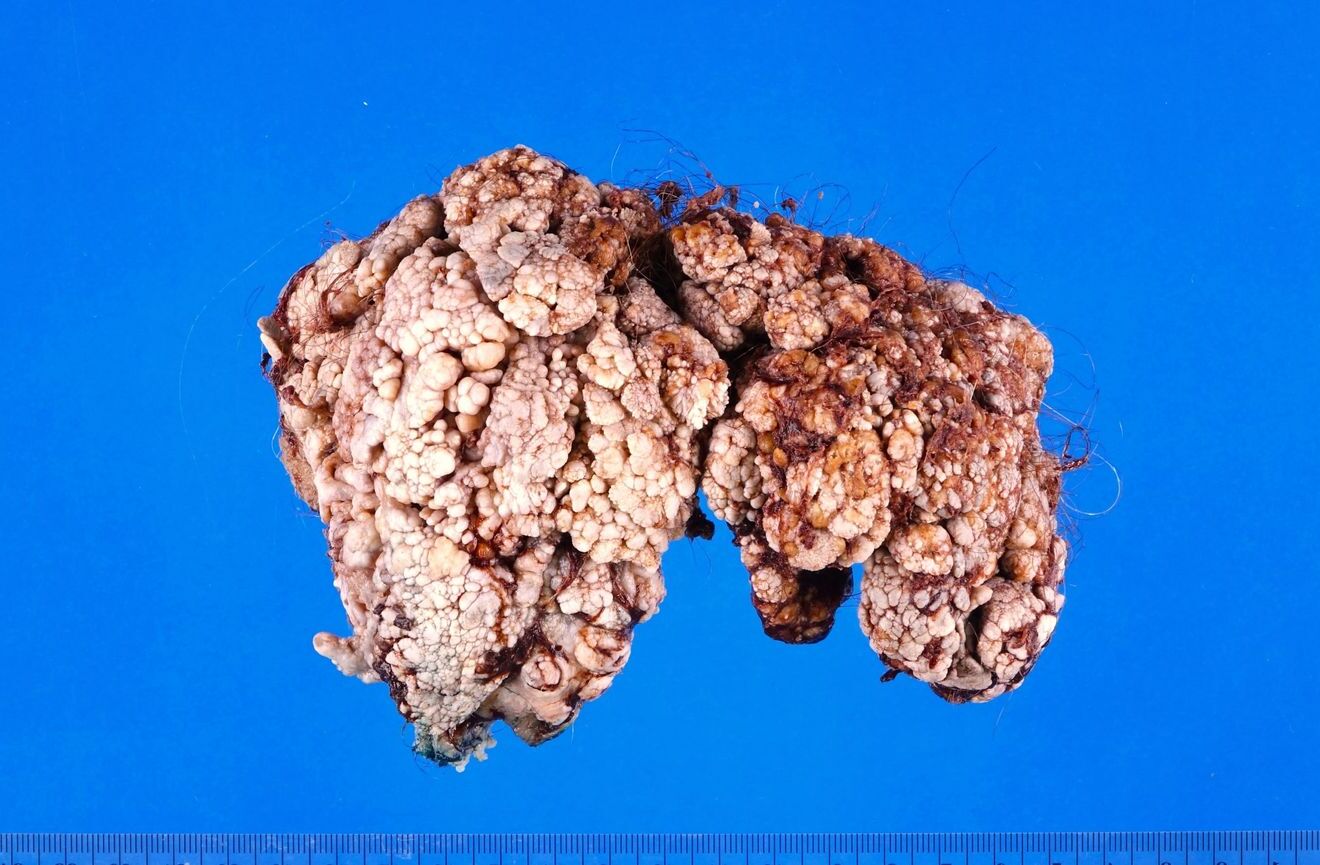
Condyloma Acuminatum, commonly known as genital warts, is a condition caused by certain strains of the human papillomavirus (HPV). These warts appear in the genital and anal areas, affecting both men and women. HPV is one of the most common sexually transmitted infections worldwide, with millions of new cases each year. Understanding the facts about Condyloma Acuminatum is crucial for prevention, early detection, and treatment. This article will provide you with 45 essential facts about this condition, covering everything from symptoms and transmission to treatment options and prevention strategies. Stay informed and protect your health by learning more about Condyloma Acuminatum.
Key Takeaways:
- Genital warts, caused by HPV, can appear in the genital, anal, and sometimes oral areas. Vaccination, safe sex practices, and regular screenings are crucial for prevention and management.
- Genital warts can cause physical discomfort and emotional distress. Open communication with partners, seeking support, and regular screenings are essential for managing the condition.
What is Condyloma Acuminatum?
Condyloma Acuminatum, commonly known as genital warts, is a sexually transmitted infection caused by certain strains of the human papillomavirus (HPV). These warts can appear on the genital and anal areas, and sometimes in the mouth or throat. Let's dive into some intriguing facts about this condition.
- Condyloma Acuminatum is primarily caused by HPV types 6 and 11, which are considered low-risk strains.
- The warts can vary in size and appearance, ranging from small, flat lesions to large, cauliflower-like growths.
- HPV is highly contagious and can be transmitted through skin-to-skin contact during sexual activity.
- Condoms can reduce the risk of transmission but do not provide complete protection since HPV can infect areas not covered by a condom.
- The incubation period for HPV can range from weeks to months, making it difficult to pinpoint the exact time of infection.
- Both men and women can develop genital warts, though they are more commonly diagnosed in women.
- The warts can appear on the vulva, vagina, cervix, penis, scrotum, anus, and sometimes the mouth or throat.
- HPV infections are very common, with most sexually active people contracting the virus at some point in their lives.
- Not everyone infected with HPV will develop genital warts; some people may never show symptoms.
- The immune system can sometimes clear the infection on its own, but the virus can remain dormant and reactivate later.
Symptoms and Diagnosis
Recognizing the symptoms and getting a proper diagnosis is crucial for managing Condyloma Acuminatum. Here are some key points to consider.
- Symptoms can include itching, discomfort, and bleeding during intercourse.
- In some cases, the warts may be so small that they are not visible to the naked eye.
- A healthcare provider can diagnose genital warts through a physical examination and, if necessary, a biopsy.
- Women may need a Pap smear to check for HPV-related changes in the cervix.
- HPV DNA tests can identify the presence of high-risk HPV strains that may lead to cancer.
- Regular screenings are essential for early detection and management of HPV-related conditions.
Treatment Options
While there is no cure for HPV, several treatments can help manage the symptoms and reduce the appearance of genital warts.
- Topical treatments like imiquimod, podophyllin, and sinecatechins can be applied directly to the warts.
- Cryotherapy involves freezing the warts with liquid nitrogen, causing them to fall off.
- Electrocautery uses electrical currents to burn off the warts.
- Laser therapy can be used to remove larger or more stubborn warts.
- Surgical excision may be necessary for extensive or resistant warts.
- Some treatments can cause side effects like pain, irritation, or scarring.
- Multiple treatment sessions may be required to completely remove the warts.
- Even after successful treatment, warts can recur, especially if the immune system is weakened.
Prevention and Vaccination
Preventing HPV infection is the best way to avoid Condyloma Acuminatum. Vaccination and safe sexual practices play a significant role in prevention.
- The HPV vaccine can protect against the most common strains of the virus, including those that cause genital warts.
- Vaccination is recommended for both boys and girls, ideally before they become sexually active.
- The vaccine is most effective when given in a series of two or three doses.
- Regular use of condoms and dental dams can reduce the risk of HPV transmission.
- Limiting the number of sexual partners can also lower the risk of infection.
- Routine screenings and Pap smears are essential for early detection and prevention of complications.
Impact on Health and Relationships
Condyloma Acuminatum can have a significant impact on both physical health and emotional well-being. Understanding these effects can help manage the condition better.
- Genital warts can cause physical discomfort and pain, especially during sexual activity.
- The presence of warts can lead to feelings of embarrassment, shame, and anxiety.
- Open communication with sexual partners is crucial for managing the condition and reducing the risk of transmission.
- Support groups and counseling can help individuals cope with the emotional impact of the diagnosis.
- Pregnant women with genital warts may need special care to prevent complications during childbirth.
- In rare cases, HPV can be transmitted from mother to baby during delivery, leading to respiratory papillomatosis in the infant.
Myths and Misconceptions
There are many myths and misconceptions surrounding Condyloma Acuminatum. Clearing up these misunderstandings is important for proper awareness and management.
- Genital warts are not caused by poor hygiene; they result from a viral infection.
- HPV cannot be transmitted through casual contact like hugging or sharing utensils.
- Having genital warts does not mean someone has been unfaithful; the virus can remain dormant for years.
- Not all HPV infections lead to cancer; only certain high-risk strains are associated with cancer development.
- Natural remedies and over-the-counter treatments are not effective for treating genital warts and can cause harm.
- HPV vaccines do not encourage promiscuity; they are a preventive measure against a common infection.
Research and Future Directions
Ongoing research continues to improve our understanding of HPV and Condyloma Acuminatum. Here are some exciting developments in the field.
- New vaccines are being developed to cover a broader range of HPV strains.
- Researchers are exploring antiviral medications that could target HPV directly.
- Advances in genetic research may lead to personalized treatments based on an individual's immune response to HPV.
Final Thoughts on Condyloma Acuminatum
Condyloma acuminatum, or genital warts, affects many people worldwide. Understanding its causes, symptoms, and treatments can help manage this condition better. Caused by certain strains of the human papillomavirus (HPV), these warts can appear on various parts of the body, including the genital area. While they can be uncomfortable and sometimes embarrassing, treatments like topical medications, cryotherapy, and surgical removal offer relief.
Prevention remains key. Vaccines against HPV can significantly reduce the risk of developing genital warts. Practicing safe sex and regular medical check-ups also play crucial roles in prevention and early detection. Knowledge empowers individuals to take proactive steps toward their health.
By staying informed and seeking appropriate medical advice, those affected by condyloma acuminatum can lead healthier, more comfortable lives. Remember, you're not alone, and help is always available.
Frequently Asked Questions
Was this page helpful?
Our commitment to delivering trustworthy and engaging content is at the heart of what we do. Each fact on our site is contributed by real users like you, bringing a wealth of diverse insights and information. To ensure the highest standards of accuracy and reliability, our dedicated editors meticulously review each submission. This process guarantees that the facts we share are not only fascinating but also credible. Trust in our commitment to quality and authenticity as you explore and learn with us.


